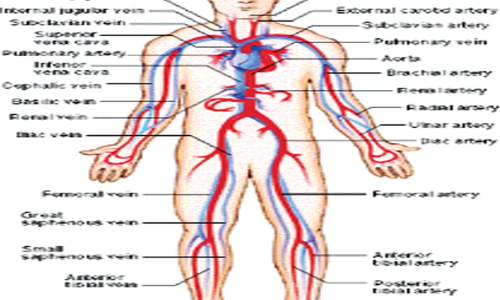Introduction to body system

Our bodies are made up of eleven systems, each of which has been designed to fulfill different functions Digestive This is the system that breaks down food and absorbs its nutrients The digestive tract is a long system of tubes that run from the mouth to the anus It includes the esophagus, stomach, small intestine, and large intestine The liver and the pancreas manufacture special enzymes to
Our bodies are made up of eleven systems, each of which has been designed to fulfill different functions: Digestive. This is the system that breaks down food and absorbs its nutrients. The digestive tract is a long system of tubes that run from the mouth to the anus. It includes the esophagus, stomach, small intestine, and large intestine. The liver and the pancreas manufacture special enzymes to help break down food.
Muscular: This system provides the body with movement. There are three types of muscle: skeletal, cardiac, and smooth. Skeletal muscles attach to bones, and are voluntary—they are consciously controlled by the nervous system. Cardiac muscles cause the heart to pump blood, and are involuntary—they contract automatically. Smooth muscles are also involuntary, and cause movement in other organs; these are the muscles that push the food that we eat down the esophagus and into the stomach.
Integumentary: The integumentary system includes skin, which provides sensory receptors and protects the body. Excretory. This system gets rid of various body wastes. It includes the sweat glands (where the body excretes unnecessary salts), kidneys (which filter the blood), and urinary tract.
Reproductive: The reproductive system allows for the continuation of life. Gametes from the male’s sperm and the female’s egg combine to form a zygote—a unique combination of genes which no other human being has! Circulatory. This is the system that our blood flows through. It carries nutrients and oxygen to all the organs of the body, and carries away wastes.
Respiratory: The respiratory system provides the body with oxygen, and it expels carbon dioxide from the body. The nasal passage, trachea, bronchial tubes, lungs, and alveoli are involved in this process. Inhaled oxygen is broken down in the alveoli (tiny air sacs in the lungs) and then passed into the capillaries, where it travels into the bloodstream. In the same way, carbon dioxide from the blood is passed back into the alveoli, and exhaled from the body.
Skeletal: The skeletal system provides structure for the body and protection for the body’s internal organs. Bones, ligaments, joints, and the skull are all part of the skeleton. Immune: The body’s immune system fights disease. The lymphatic system is the main defense mechanism within this system. A liquid called lymph flows over the tissues and carries off harmful bacteria, which is filtered out in the lymph nodes. White blood cells, which are produced in our bones’ marrow, are another important part of the body’s defenses.
Nervous: The brain, spinal cord, and nerves work together to coordinate the body’s actions. Our senses are also part of this system, allowing us to see, taste, smell, touch, hear, and feel pressure and pain. Endocrine. The endocrine system is made up of the chemical messengers which control many bodily activities: hormones. Hormones initiate many bodily processes, such as reproduction, growth, and digestion. To learn more about the body’s systems, we recommend the Systems and Structures chart book.
Blood and the Circulatory System: Did you know that blood contains more than just blood cells? Our bloodstreams carry red blood cells, white blood cells, platelets, and plasma. Red blood cells, or erythrocytes, carry oxygen through the body and make up a little over 44% of our blood content. White blood cells, which are part of the immune system, fight disease by attacking and devouring harmful cells. Platelets initiate blood clotting by pinching together damaged arteries. White blood cells and platelets together make up less than 1% of our blood. Liquid plasma, which makes up 55% of our blood, carries nutrients to the rest of the body.
Veins carry deoxygenated blood to the heart, and arteries carry blood out from the heart. Tiny capillaries connect veins and arteries to body tissues. Arteries have thick cell walls and are tough and elastic in construction, to deal with the pressure of the blood being pumped through them. Veins have thinner walls and are not as elastic.
Human hearts have four chambers: Deoxygenated blood—which needs a fresh supply of oxygen—is brought into the first chamber, the right atrium. The blood is pumped into the right ventricle, and from there it is pumped to the lungs.
In the lungs, the blood receives oxygen. From the lungs, the oxygenated blood is brought back to the heart. The blood passes through the left atrium into the left ventricle, and from there it is pumped through the rest of the body.














